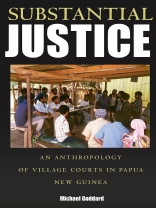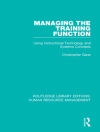Papua New Guinea’s village court system was introduced in 1974, partly in an effort to overcome the legal, geographical, and social distance between village societies and the country’s formal courts. There are now more than 1100 village courts all over PNG, hearing thousands of cases each week. This anthropological study is grounded in ethnographic research on three different village courts and the communities they serve. It also explores the colonial historical background to the establishment of the village court system, and the local and global processes influencing the efforts of village courts to deal with everyday disputes among grassroots Melanesians.
विषयसूची
List of Illustrations
List of Tables
List of Abbreviations
Preface and Acknowledgements
Introduction
Chapter 1. Colonial Law: An Extended Prelude to the Village Courts
Chapter 2. The Administration of Village Courts
Chapter 3. Village Courts on Trial
Chapter 4. Three Village Courts and their Social Environments
Chapter 5. Village Court Politics
Chapter 6. Pari Village Court in Action
Chapter 7. Konedobu Village Court in Action
Chapter 8. Erima Village Court in Action
Chapter 9. Between Groups and Individuals
Conclusion: The Local and the Global
Appendix: The Offical Range of Offences Heard by Village Courts
References
Index
लेखक के बारे में
Born in England, Michael Goddard now lives in Australia. He has carried out anthropological fieldwork in Papua New Guinea since 1985 and is the author of The Unseen City: Anthropological Perspectives on Port Moresby, Papua New Guinea (Pandanus Books 2005). He is currently a Senior Lecturer in Anthropology at the University of Newcastle, Australia.












